|
Miscellaneous
What you see is what you get

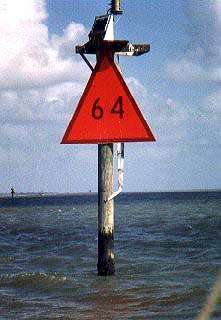
|
Channel Marker
The entire Intracoastal is well marked.
The familiar red and green markers are well placed, and well maintained. Some like
this one have flashing lights. In the Canal, red markers are on the land side, and
the green ones are to seaward. On the many channels which cross the ICW, you
must remember: "Red right returning". This means that when you are
proceeding up from the Gulf, the red markers will be on the right, or starboard side of
the boat, the green will be on the left (port). |

|
Range Markers
Range markers are only found on the ship
channels, not on the ICW itself. The idea is that as long as you have the two
markers lined up with each other, you are still in the channel.
|
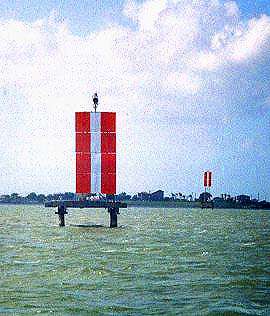
|

|
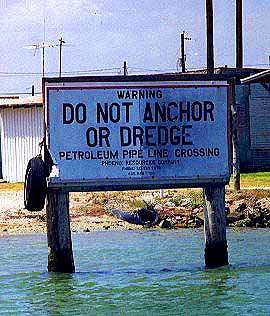 |
Pipelines
There are many oil and natural gas wells in the
gulf. The produce of these is often piped directly to shoreside facilities.
These pipelines are common and are marked by signs such as this.
|

|
The La Salle monument
This monument stands on the shore of Matagorda
Bay at the old seaport of Indianola. The following is from the Microsoft Encarta 98
Encyclopedia:
|
| La Salle, René-Robert Cavelier,
Sieur de (1643-87), French explorer in North America, who navigated the length of the
Mississippi River and claimed the Louisiana region for France. In 1684 he sailed from France with a fleet of four ships on
an expedition to establish a colony at the mouth of the Mississippi River. When he reached
the Gulf of Mexico he was unable to find the Mississippi, and landed on the shore of what
is now Matagorda Bay, Texas, believing the bay to be the western outlet of the
Mississippi. After several fruitless searches by land for the mouth of the river, La Salle
realized his mistake. In January 1687 La Salle set out for Canada with a party of 17 men
to procure help for the few members left of the original expedition. His men mutinied,
however, and he was killed near the Trinity River. One of La Salle’s supply ships,
the Belle, sank in 1686 during a
storm and was discovered in Matagorda Bay in 1995. |
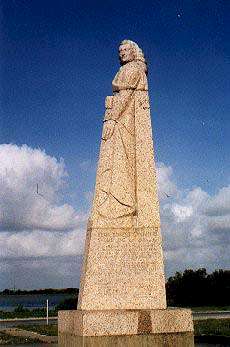 |
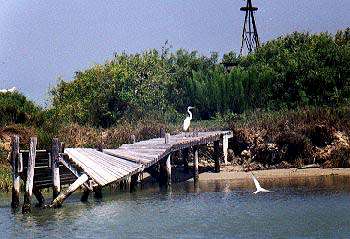 |
Disrepair
In past years, the south Texas economy has not
always been as good as it is today. Even now, it lags behind the rest of the
state. And, given the Mexican economy, the future does not look all that
great. Sights like this are not uncommon.
|

|
Gulls
Gulls are, of course, ubiquitous, as are a
great number of other birds, from Vultures to Whooping Cranes. I really wish that I
had taken more pictures of the birds. Next trip, I promise I will.
|
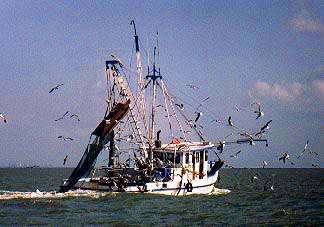 |

|
 |
Cattle
I think that I mentioned something earlier
about ranches. Well where there are ranches, there are cows, and once in a while a
cow likes to go for a swim. Go figure. Maybe, like Gary Larsen said, this is
one of the things that cows do when they think no one is around. |

|
The author
Here is a good example of why it is a bad idea
to fish when there is a camera around. I remember this fish as being about two feet
long. I think I'll get a new camera. A real complicated one. Then I
won't show my wife how to use it. Yea, that's it.
|
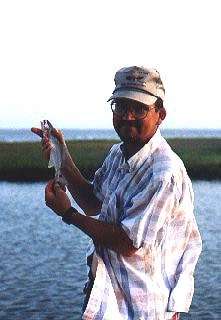 |

|
Back
to ICW
|